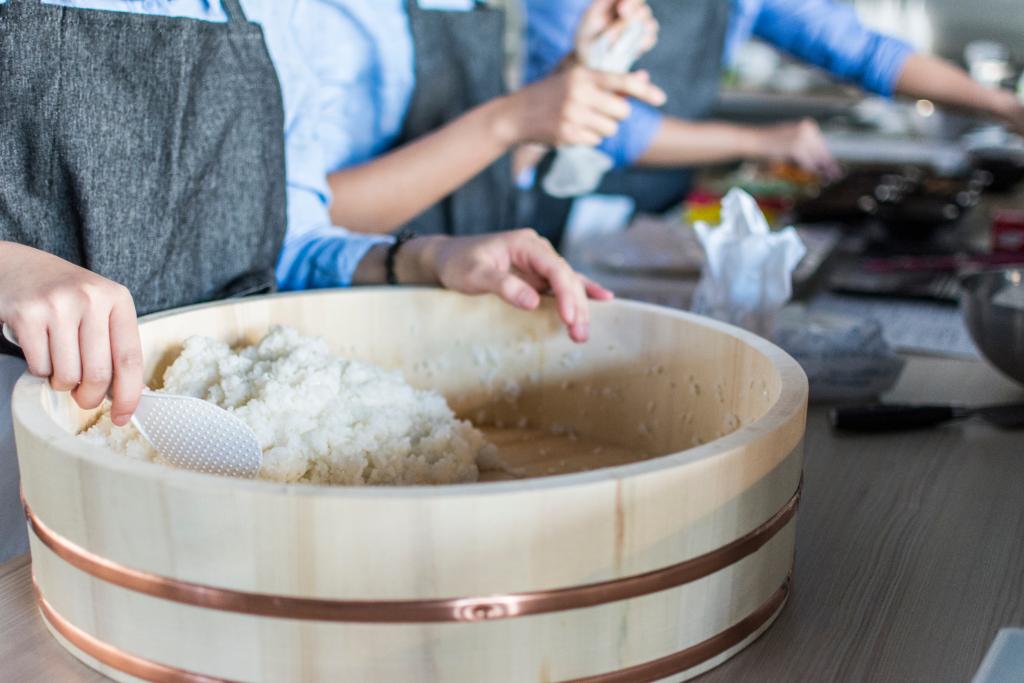All you need
to know about
shōshū
in a nutshell
Shōchū is a distilled spirits from Japan made from rice, barley, sweet potatoes, brown sugar and buckwheat with the help of Koji and distilled at a low abv.
The geography of Shōshū
Today, Japan produces Shōchū (or similar products) in all 47 of its prefectures, of which Kyūshū Island and Okinawa Prefecture are the two major areas of production.
In 2015, four types of Shōchū received the World Trade Organisation’s protected geographical indication (PGI). These are barley-based Iki Shōchū, rice-based Kuma Shōchū, sweet potato-based Satsuma Shōchū, and Okinawa’s awamori. Those spirits can therefore only be branded as such if they were actually made in their respective areas (like cognac and champagne).
Unsurprisingly, three of these protected varieties are made in Kyushu, where Shōchū has been developed at the begining. Iki Shōchū, arguably the original barley Shōchū, is from Iki island in Nagasaki prefecture. The island still has seven distilleries to this day. Kuma Shōchū is from Kumamoto prefecture, while Satsuma Shōchū hails from Kagoshima and arguably has the largest production volume.
Awamori is being made in Okinawa from Thai rice only (Japanese rice is not allowed). It can also be matured longer than the others, with some varieties being in a barrel for up to ten years.

The history of Shōshū
Shōchū apparently arrived to Japan from Southeast Asia via the islands Ryūkyū before moving north to Kyūshū. From that early times, a difference in the vocabulary is still present: rice based alcohol from the islands Ryūkyū is called awamori because it is made from long rice (Indica) while the rice used in the rest of Japan is short rice (Japonica), and is now often differentiated from shōchū.
The first writings referring to shōchū are from the 16th century. By then, Francis Xavier tried to evangelize Kyūshū and came across this alcohol.
*inspired by Wikipedia
How is Shōshū made?
Shōshū has a wide ingredients list
Rice
Barley
Wheat
Sweet potatoe
Carrots… and much more
Pretty much like vodka right? …. but the comparaison with vodka stops here. The production process is far more complex than vodka, and there are many styles of Shōchū based on whether it is distilled once or multiple times, fermented with mold, or not, aged in wood, or not….
Industrial Shōchū are often molasse based.
The fermentation of Shōshū
Fermentation is achieved thanks to Koji (also to be found in sake brewing). There are three types of Koji which will each impact the final spirits in its own way.
Black Koji–> is said to bring the highest quality. Difficult to use (tends to spread over base ingredient fast)
Yellow Koji –> it is the one that sake brewer also use. It gives a fruity notes to the end product.
White Koji –> is very common for Shōchū making. It is rather neutral in taste.
As Wine Searcher writes
“There are three key steps in the production of Shōchū, starting with the preparation of the mold, or koji. Rice or barley is first soaked in water and then steamed and cooled, before it is laid out ready for the application of the kojikin (Aspergillus oryzae) fungus spores. The koji mold is left to develop undisturbed for a few days, during which the rice starch is broken down into sugar ready for fermentation.
The next stage in the process is the preparation of the moromi, or “fermented mash”, made from the fermentation of koji together with water and yeast over a six- to eight-day period. Koji is an important factor in the final flavor profile of the Shōchū and varies according to the distiller and/or region of production – white and black koji are the most common strains used.
Once the primary fermentation is complete, the core ingredient (e.g. sweet potato, barley), which will form the basis of the Shōchū’s end style, is crushed and combined with the moromi and water, kick starting the second round of fermentation. This secondary moromi is allowed to ferment for approximately eight to 10 days, after which distillation can begin.”

The distillation of Shōshū
There are two types of Shōchū according to their distillation: single distillation or honkaku or even otsurui, and multiple distillation or kōrui, the former being of better quality.
-single distilled: single distilled Shōchū brings less alcool but more character. the distillation process, which takes place in pot stills. This technique allows to retain the flavors of its base ingredient. The resulting distillate, or genshu, is then either aged in terracotta jars or wooden barrels for anywhere between a few months to several years, in the case of Honkaku, or distilled again before ageing to obtain the higher-alcohol Korui Shōchū. Water may also be added to the genshu at the filtration and bottling stage in order to adjust the final alcohol level.
-multiple distilled: the more industrial types of Shōchū are made this way and the alcohol level can go up to 46 %.
Styles and classification of Shōshū
Top-quality Shōchū, called honkaku Shōchū as we just explained is single-distilled. Those are the Shōchū to try to understand that a sweet potato Shōchū will taste very different from a rice Shōchū.
How do Shōchū taste according to the base material (Spiritsfully is missing in depth tasting classes to keep enriching this class. This is coming….)?
Rice shōchū –> mild flavour
Barley shōchū –> mild flavour
Soba shōchū –> mild flavour
Sweet potatoe shōchū –> strong and smoky flavour
Brown sugar shōchū –> mild flavour
Single- and multi-distilled Shōchū may be blended in varying proportions to create blended Shōchū.
RESOURCES/SOURCES
Wikipedia was again of great help, as well as Ueno Gourmet masterclasses, and Sake Sommeliere Eriko Jitsukata who read that text over and correct some approximations. Should mistakes subsist, they are only Spiritsfully’s fault though.
Oh! And that website was very useful too!

